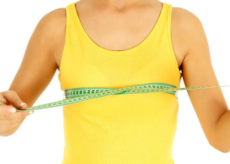How Menstrual Period Changes in 20s, 30s, 40s and 50s
Sometimes it is strong, sometimes weak; sometimes short, sometimes particularly long; sometimes painful and then again completely relaxed.
Every woman has experienced such monthly moods of the menstrual cycle at least once and probably made her moan. While we already know these small fluctuations well, only a few people are aware of the fact that the period not only changes monthly, but continuously with each phase of life.
From the young 20’s to the menopause in the 50’s – here’s what awaits you in terms of cycle in the coming years.
How the period changes with age?
Period in the 20s
While in teenage years one often has to struggle with very irregular periods. In the 20s this is more of a routine. The reason for this is ovulation. While ovulation can be absent from time to time at a young age, as a young woman you now experience it every month. The cycle thus follows a much more regular pattern. On the other hand, women in their 20s often experience symptoms for the first time: Feelings of tension in the chest, headaches or abdominal cramps are among these typical PMS complaints.
In addition, there is external influence. In this phase of life one is often happy for the first time about a serious, firm relationship that goes hand in hand while taking contraceptives such as the pill. The hormones administered to the body can also influence the period. Hormonal contraceptives often weaken the periods and even disappear completely and can even be controlled a little by taking the pills.
Period in the 30s
In the 30s women usually don’t experience any nasty surprises anymore, such as suddenly extremely heavy bleeding. The cycle also increasingly follows a fixed rhythm. If, however, you experience unusually strong periods or cramps, you should always talk to a gynaecologist during this phase of your life. From the age of 30, so-called myomas, i.e. small, benign growths in the uterus, can grow and cause sudden pain.
Not to forget, of course, the pregnancy – at 30 plus, many couples decide to start a family. Pregnancy makes the period disappear for the time being – if you breastfeed the baby regularly after giving birth, it will only return after weaning. As the cervix widens slightly during childbirth, the blood can also flow out more quickly during the period, which relieves abdominal pain and cramps in many women.
Check out benefits of olive oil in fertility
Period in the 40s
While in the 30s it looks as if the period is finally under control, in the 40s the cycle turns life upside down again. In the eight to ten years before menopause, which usually follows in the 50s, the body prepares to have no more children. Ovulation therefore becomes more irregular again in these menopausal years and may well fail to occur. No ovulation, no period – the cycle now changes into an unpredictable, irregular plague. A constant ups and downs of the sex hormones can also lead to more frequent intermediate and spotting bleeding, and PMS complaints often feel more intense than ever before.
Period in the 50s
In 50s, there’s an end with the so-called menopause. This is when ovulation and menstruation are completely absent for at least 12 months, marking the end of the body’s fertile years. It is particularly important in this phase of life that every woman is aware that she is still fertile up to the time of menopause despite an irregular cycle and missing periods and should therefore always use contraception.
Extra note: The course of menopause varies for each woman. While some may notice the physical changes as early as the mid 40s, others experience them in the 50s. The transitions flow between these two decades of life and can therefore not be generalized for every woman.



